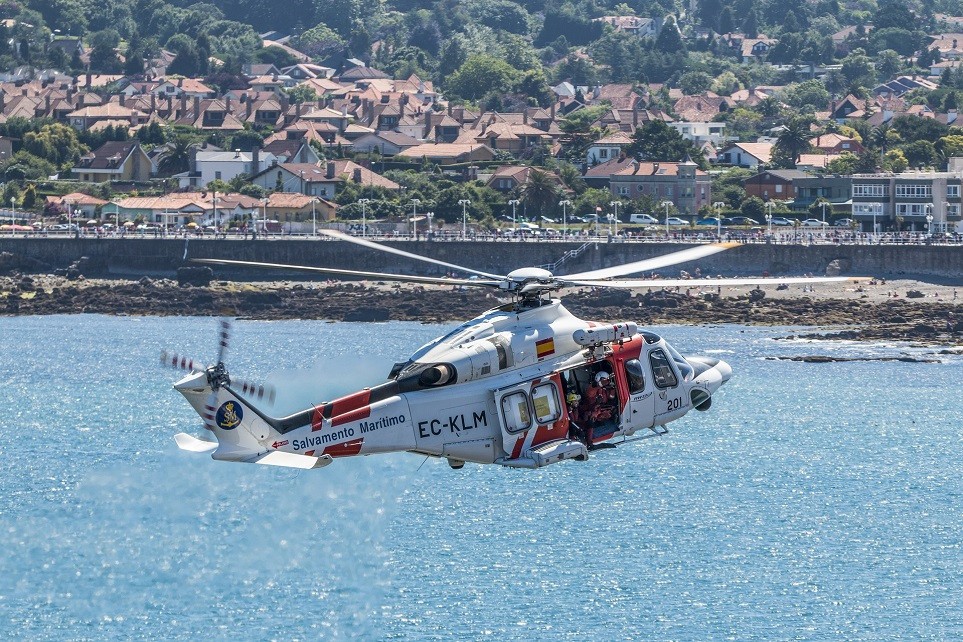Present and future of Eurosur

Back in 2012, GMV began to design, implement and deploy the Eurosur system for Frontex. Eurosur is a multi-purpose system designed to prevent cross-border crime and irregular migration and to contribute to protecting migrants’ lives at the external borders of the EU.
The Eurosur system aims to provide near-real time information exchange capabilities, ensuring the cooperation of the different national border control organizations and Frontex, increasing their situational awareness, boosting their reaction capability, and ensuring the joint response to challenges.
Going live on December 2, 2013, Eurosur has since become a key asset for Frontex to manage Europe’s external borders. In the first phase, the system was deployed in the first 19 Schengen countries with external land or sea borders. The second phase of the deployment saw the remaining 12 participating Member States (MS) adopting the system by December 1, 2014.
Eurosur is a distributed system consisting of a network of nodes (a combination of hardware devices and software applications) deployed at the National Coordination Center (NCC) established on each MS. Each NCC groups the authorities responsible for border control in a given MS and its mission is to coordinate border surveillance activities at a national level, serving as a hub for the exchange of information. For this purpose, Eurosur provides the NCC users with secure e-mail addresses, video conferences and the custom-made Eurosur Application for exchanging border surveillance information.
The different nodes are interconnected, creating the Eurosur Communication Network (ECN). Every NCC collects local and national information about the incidents happening at the MS borders and enters them into the Eurosur Application running in the node (either manually through the graphical user interface or automatically through the Network Integration Interface), creating the national situational picture. The NCC decides which information to share and with whom, thus creating communities of interest with other MS and with Frontex.
Based on this input and adding information from other sources directly integrated into Eurosur, Frontex creates the European situational picture and the common pre-frontier intelligence picture, focusing on areas beyond the Schengen Area and the EU’s borders. These two pictures contain information on the events that are taking place now at the EU’s borders, operational activities, and analysis and are shared with the MS through the ECN, allowing continuous monitoring of the External Land and Maritime Borders of the EU, MS air borders and internal border crossing points.
Additionally, the Eurosur system seamlessly integrates with the Eurosur Fusion Services, a set of services delivered centrally by Frontex in cooperation with the European Maritime Safety Agency (EMSA) and the EU Satellite Center (SatCen). These services include automated vessel tracking and detection capabilities, software features for predicting vessel positions, or precise weather and oceanographic forecasts. The provision of the Eurosur Fusion Services through Eurosur allows MS to further improve their situational awareness, facilitating their access to state-of-the-art technologies, and helping to reduce the duplication of efforts and costs.
By analyzing all this information in real time, the national authorities responsible for the surveillance of land, sea and air borders (border guards, coastguards, police services, customs authorities, navies…) and the European Border and Coast Guard Corps (Frontex) can intervene according to the presumed impact of a situation, such as the movement of migrants spotted near external borders, for example. Eurosur also allows the rapid exchange of information between the supervisory authorities and the search and rescue authorities.
On December 2018, the Eurosur System received the Interim Authorization to Operate (IATO) as an EU RESTRICTED system. At this moment, the ECN transformed effectively into a classified network. Since then, the ECN has been authorized to host and exchange EU Classified Information (EUCI) up to the EU’s RESTRICTED level.
With Eurosur Regulation (EU) 2019/1986, the ECN became independent from the Eurosur system, constituting the EBCG Network (European Border and Coast Guard Network), which will be used by Frontex for the secure exchange of information (the ECBG is foreseen to become EU CONFIDENTIAL by 2023), not only from the Eurosur application, but also from other Frontex systems. An example of another system receiving early access to this ECBG Network is the Vulnerability Access Platform (VAP), also developed by GMV, which yearly collects and analyses the state of the MS borders, checking them against EU standards and providing recommendations for improvement.
Eurosur will improve its capabilities to exchange information in an easier and more secure way, by standardizing the information in the situational pictures and in the reports. Member States will also need to report on any situation having an impact on the EU’s external borders via reports and case-to-case alerts, and on incidents and operations related to Search and Rescue. The cooperation with third countries will also be improved, establishing and sharing specific situational pictures with them.
A first step towards the required modernization of the former ECN to support these new capabilities is the replacement of the hardware in the old nodes by new state-of-the-art devices. This project is being executed by GMV at the moment and is revealing the need for close cooperation and perfect coordination between the several GMV departments participating in the project to ensure the purchase, production, transportation and deployment of the nodes at the required dates according to the project’s tight schedule. The current COVID-19 pandemic poses additional challenges to an already complex project.
Author: Jorge Díaz